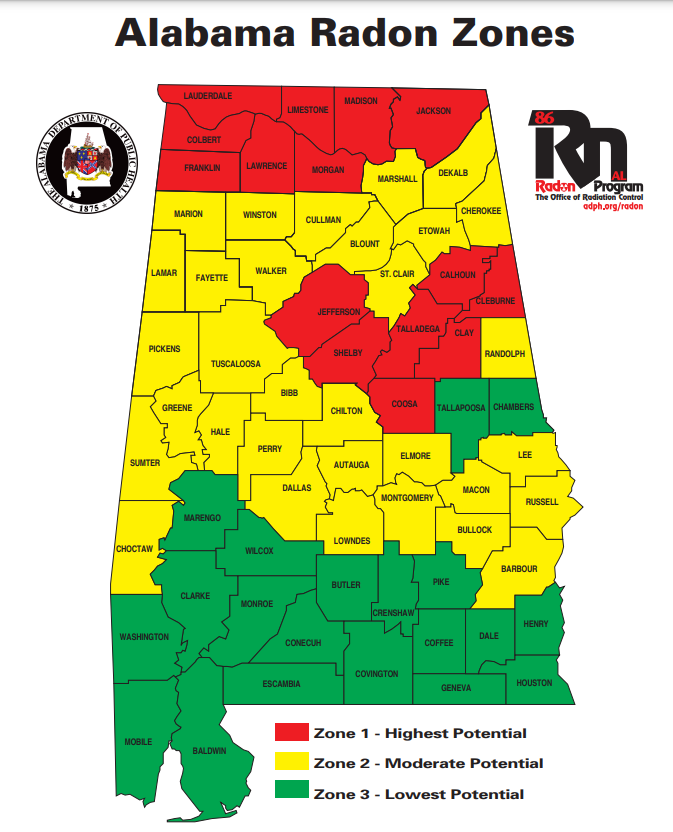-
Navigating Radon Levels in Jefferson County, Alabama: Prioritizing Health and Safety
Radon, a colorless and odorless radioactive gas, poses a significant health threat when it accumulates indoors. In Jefferson County, Alabama, and its surrounding areas, understanding radon levels and their health impacts is crucial for residents' well-being. Let's delve into the radon landscape of Jefferson County, explore its health impacts, and discuss mitigation strategies.
Exploring Radon in Jefferson County: Jefferson County, home to vibrant cities like Birmingham and Hoover, grapples with radon, a pervasive environmental hazard. Radon levels in this region vary due to geological factors and construction practices, sometimes exceeding the EPA's recommended action level of 4 picocuries per liter (pCi/L). In Alabama, 15 counties have been identified as having the highest potential for elevated radon levels. They are Calhoun, Clay, Cleburne, Colbert, Coosa, Franklin, Jackson, Jefferson, Lauderdale, Lawrence, Limestone, Madison, Morgan, Shelby and Talladega.

The Health Impact of Elevated Radon Levels: Elevated radon levels pose a serious health risk, being the second leading cause of lung cancer after smoking. What's less known is that radon in water can contribute to stomach cancer rates. In regions like Jefferson County, where radon can seep into groundwater, addressing radon in both air and water is crucial for safeguarding health.
Mitigating Radon Risks: To mitigate radon risks, homeowners can employ various strategies. Sub-slab depressurization systems draw radon gas from beneath homes and vent it safely outdoors. Improving ventilation, sealing cracks, and using radon-resistant construction materials are also effective mitigation techniques, particularly in new construction.
Health-conscious residents in Jefferson County should prioritize radon testing and mitigation efforts to ensure safer indoor environments. Radon is measured in picocuries per liter of air (pCi/L), a measurement of radioactivity. In the United States, the average indoor radon level is about 1.3 pCi/L. "The average outdoor level is about 0.4 pCi/L. The U.S. Surgeon General and EPA recommend fixing homes with radon levels at or above 4 pCi/L. EPA also recommends that people think about fixing their homes for radon levels between 2 pCi/L and 4 pCi/L." (Radon in Alabama, n.d.)
As awareness of radon risks grows, residents of Jefferson County, Alabama, must prioritize health and safety. By testing homes for radon regularly and implementing mitigation measures, individuals can reduce radon exposure and lower the risk of lung and stomach cancer. Remember, taking action against radon is a proactive step towards healthier living.
Schedule your radon testing now to create radon-safe environments for yourself and future generations in Jefferson County and beyond.
https://www.alabamapublichealth.gov/radon/radon-in-alabama.html
